How To Measure the Return On Your Furnace Investment
When it comes to your home, furnace replacement may not be the first thing you’d choose to spend your hard-earned money on. Purchasing new granite countertops, a fresh coat of paint, or a trendy new kitchen backsplash may seem like the biggest bang for your buck. However, your furnace may actually be the smartest, most economical choice when it comes to home improvement.
But how can we be sure? Is replacing your furnace before it breaks down again a sound investment? Will it save you money in the long run? Let’s talk about the energy savings of new efficient furnace systems, the variable costs involved, the seemingly expensive upfront costs, and a host of other factors to determine if it’s worth replacing your unit before it breaks down on a cold Canadian winter night.
Factors That Determine ROI
If your unit seems to be working fine and showing no outward signs of damage, but your bills have suddenly skyrocketed, your furnace may be losing too much energy. Older furnace units waste energy by burning more fuel while also producing less usable heat. Once you factor this in, along with variable resource costs, environmental repercussions, and high upfront unit costs, you can decide if a new furnace is worth the investment. Let’s investigate these factors in more depth.
Energy Efficiency
Energy efficiency in all furnace units is measured by the annual fuel utilization efficiency (AFUE) rating. The higher the AFUE rating, the more efficient the unit is. The most current high-efficiency furnaces have an AFUE rating between 90% and 98%. By way of comparison, older units have an AFUE rating of between 56%-70%. That equals a lot of wasted energy. In fact, it has been shown that modern high-efficiency furnaces can save you up to 45% of your fuel bill compared to older and less-efficient heating systems.
Not only do older furnace units waste energy by burning more fuel and producing less heat for your home, but the pollution they can create is also problematic.
Check your unit to calculate its AFUE, check the weather to see how hard your furnace is working and how much energy it’s wasting, and then decide: if you have an older unit, these factors should quickly explain why your energy bills climb every month.
Variable Fuel Costs
Whether you have a gas, oil, or electric furnace, it’s important to take into consideration the cost of fuel.
Ontario Hydro states that over 60% of our annual energy costs go to heating our homes. This, together with an inefficient furnace with a low AFUE rating, can lead to remarkably high costs.
Now couple this with the variable cost of fuel. For example, if gas or electricity prices boom and bust as they do in almost every economy, you could be facing a larger monthly heating bill depending on where your region is in the boom-bust cycle. When fuel prices are high, it becomes even more vital to keep energy efficiency as high as possible.
Carbon Footprint
Energy is too precious to be wasted. And the costs too risky: financially and environmentally. Thankfully, most of us do our part to recycle, renew, and reuse even when it comes to energy savings.
If fighting against climate change is important to you, consider a high-efficiency furnace. They produce a cleaner heat, lower pollution output, and consume less energy.
And your monthly energy bills go down: it’s truly a win-win situation.

Unit Cost
No one wants to spend money for no good reason. After all, if your furnace is working fine, what’s the harm? As we discussed previously, the reasons to switch are considerable. Being proactive can pay off: high-efficiency units may have a higher upfront cost, but lower operating costs mean you will spend less over time.
Similarly, the cost of constant repairs and maintenance for an old unit may, over time, turn out to be a higher cost than both replacement fees and ongoing energy consumption costs.
Government Rebates
To reduce energy costs and contribute to climate sustainability, the Government of Ontario has implemented a five-year Climate Change Action Plan.
With the help of the Green Investment Fund and Enbridge Gas Inc., the Home Efficiency Rebate was created to help Ontarians contribute to sustainability by receiving rebates towards the purchase and installation of high-efficiency heating systems. To qualify for the rebate, new natural gas furnaces must have a 95% AFUE rating or higher. Natural gas boilers must have an AFUE rating of 90%.
To read the full conditions and terms, and learn how you can get started, please review program information here.
Online Efficiency Calculators
When in doubt, there are several calculators and online tools that can help estimate the energy and cost savings associated with replacing your HVAC unit with a more energy-efficient option. However, these are just estimates. Please ask your furnace technician for a more accurate calculation.
Improve Your Home’s Resale Value
Another way to measure the return on your furnace investment is not by calculating energy efficiency. It’s by knowing the real estate market and understanding what potential purchasers are looking for.
If you are selling your home now, or plan to in the near future, it’s important to take a good look at your furnace system. If it’s an old system, and showing signs of needing repair, it may be wise to upgrade your unit in order to close a successful sale.
But good news. According to the Appraisal Institute of Canada, most homeowners can expect a 50%-80% recovery rate of return on the purchase and installation of a new heating system.
And while a new furnace may not be as flashy as a kitchen renovation, an efficient, working furnace is a must in any Canadian home.
Call The Furnace Professionals
Your older furnace may be costing you time and money. If you’re not sure whether it’s time to replace your heating unit, call us for your free in-home assessment. We provide honest, trustworthy advice, and installation done right the first time.





